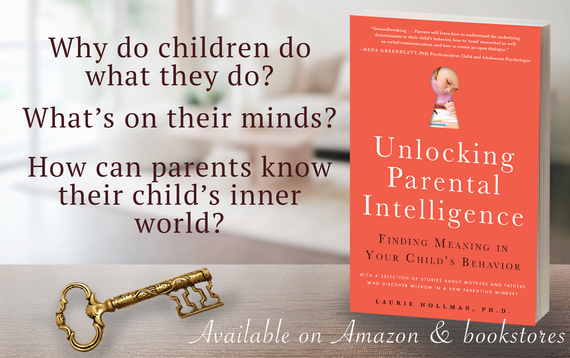I once read about a child who knocked on the bathroom door insisting, "Let me in! Let me in!" So, let him in! That child is ready for toilet training. I've observed parents who train their kids in the summer when they let them run around naked in and out of a wading pool and go pee in the woods in the back yard. You may not be that kind of mother, but those kids are ready for toilet training!
The key is when the child is prepared, not when the parent is prepared.
Six Signs of Toilet Training Readiness
It's best for parents not to prescribe a "right" time for toilet training but to observe when a child is showing he or she shows readiness. When the child reveals readiness, toilet training becomes a relatively easy job. You may observe six common signs:
1.Your child throws things out for himself.
2.Your child can say "No." She makes her own decision about when to check out a potty.
3.Your child starts putting things where they belong. He is interested in arranging where his toys go.
4.Your child delights in imitating your behavior such as going to the toilet.
5.Your child's digestive system is maturing. He starts to urinate and move his bowels at predictable times.
6.Your child begins pointing to her wet diaper and grunting when she's trying to have a bowel movement. She also uses words like poop and pee.
Toilet training should always be a positive experience that a child is proud of. If there is increasing tension and frustration, stop trying and let your child show you in his or her own way when he or she is ready to make it his or her own job.
Signs When a Child Does Not Show Readiness
1.Doesn't want diaper off at all, screams and struggles
2.Takes off his diaper than has a bowel movement on the floor
3.Struts around with a broad gait, and then sits down with a mushy stool in diaper but appears not uncomfortable but blissful.
4.Says no,no, if a parent comments that he seems to need to go to the bathroom
5.Hides in closet or corner where you hear grunting
6.Shows any resistance whatsoever to using the potty or toilet.
7 Tips for Parents
1 .The average age for toilet training is three.
2. Beware of pressures on you as parents to perform this task because your tension will be transferred to your child.
3. Two-year-olds have object permanence which means when daddy goes to the next room the child expects he is just around the corner. They understand when someone is out of sight they are not gone. As they gain this new ability, it leads them to be focused on and possibly concerned about good-byes and disappearances. As a result, they worry about where the water goes when it goes down the drain in the tub. Where does it go? Does it come back? Thus, they may be afraid of losing their stool.
4. Notice when the child enjoys what he can do for himself. This suggests he will be interested in a potty of his very own.
5. When the child is aware of the need to urinate or have a bowel movement but hides when doing so, he is not up to sharing this feeling yet with his parents.
6. When it is the parents' motivation and the child is rushed to the potty when he shows he's about to have a bowel movement, he may let you proceed, but if he has a stony face and arms hanging loose with feet and legs stiff, he's saying I'm not up for this yet.
7. Become a good observer of your child's habits and they will clue you in to when to start the toilet training. Let your child teach you!
Laurie Hollman, Ph.D., is a psychoanalyst and author of Unlocking Parental Intelligence: Finding Meaning in Your Child's Behavior found on Amazon, Barnes & Noble, Familius and wherever books are sold.
